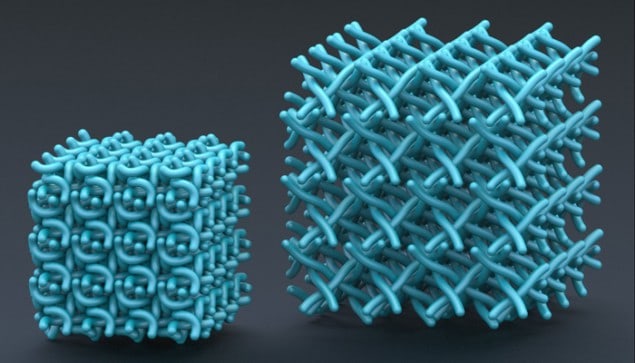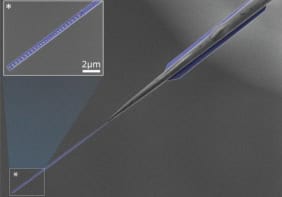
If you have ever sat in the bath and wondered why your fingers go wrinkly when wet, it is because the dead outer layer of your skin is made up of matrix-like structures called corneocytes. They let the skin absorb water easily when wet, yet quickly become much less permeable to moisture when conditions are dry. Physicists in Germany have now modelled a corneocyte and carried out calculations to see how its volume changes as it takes up water. As well as providing important information about how our skin reacts to its surroundings, the new work could help researchers to develop new materials, such as fabrics, that mimic the properties of skin.
The outer layer of a mammal’s skin – known as the stratum corneum – is the body’s first line of defence against toxins in the environment, and also helps to control the water content of our body. When ambient conditions are dry, the stratum corneum forms a barrier to evaporation to prevent the skin from drying out. In damp conditions, in contrast, it hydrates the skin by absorbing water. The stratum corneum is made mostly from keratin – a fibrous protein found in skin, hair, nails and claws – which is arranged to form the corneocytes.
Springy filaments
In a previous study, Myfanwy Evans of the Friedrich-Alexander University in Erlangen and Stephen Hyde at the Australian National University showed that the structure of corneocytes is based on a cubic unit cell made from criss-crossing filaments of keratin and measuring about 45 nm across. The filaments are not normally straight, but instead resemble helical springs. The keratin’s springiness means that the volume of the unit cell can increase by a factor of five until the filaments have essentially straightened out. But much like stretching a spring, this expansion requires energy to overcome the filaments’ tendency to contract. Evans and Hyde argue that this expanding force is developed when the filaments absorb water and become larger.
In this latest research, Evans has teamed up with Roland Roth of the University of Tübingen to study the thermodynamics of the expansion process. In their calculations, the two researchers quantified the corneocyte’s tendency to expand in terms of the energy released as a filament absorbs water. Evans and Roth added this “solvation free energy” to another term that expresses the mechanical energy involved in expanding the unit cell. The result is a “grand potential per unit cell” that reflects the compromise between the filament wanting to expand as it absorbs water, and this expansion being held back by the restoring force of the filaments’ spring-like shape.
Roth and Evans calculated the free energy of the unit cell over a range of sizes, plotting the free energy as a function of the length of a unit cell and the radius of curvature of the helical filaments. This “3D energy landscape” revealed a distinctive valley-like structure that contains a region of low free energy where it is thermodynamically favourable for the unit cell to exist. At one end of the valley the length of the unit cell is relatively small and the radius of curvature is relatively large – corresponding to a compact and dry unit cell. At the other end of the valley the length of the unit cell is large and the radius of curvature small – corresponding to a wet and swollen unit cell.
Smooth and reversible transitions
According to Evans and Roth, this valley is a pathway for the corneocytes to make smooth and reversible transitions between their wet and dry configurations. Furthermore, the volume occupied by keratin (as opposed to water or air) varied from 11% to 38% from one end of the valley to the other. This agrees with the 15–35% range suggested by experimental measurements.
Evans says that his work could lead to a better understanding of some skin diseases that affect the stratum corneum. It could also inspire scientists and engineers to create new biomimetic materials that copy the skin’s ability to swell and shrink in response to ambient humidity. One possibility could be fabrics that absorb moisture from the body.
Evans is keen on studying the optical properties of corneocytes, which because they are helical, could affect how our skin interacts with light. Optical studies could also point towards new materials that have structural colour. This is an effect seen in biological systems such as butterfly wings and feathers, and it arises when light interacts with tiny structures in a material.
The research is described in Physical Review Letters.



